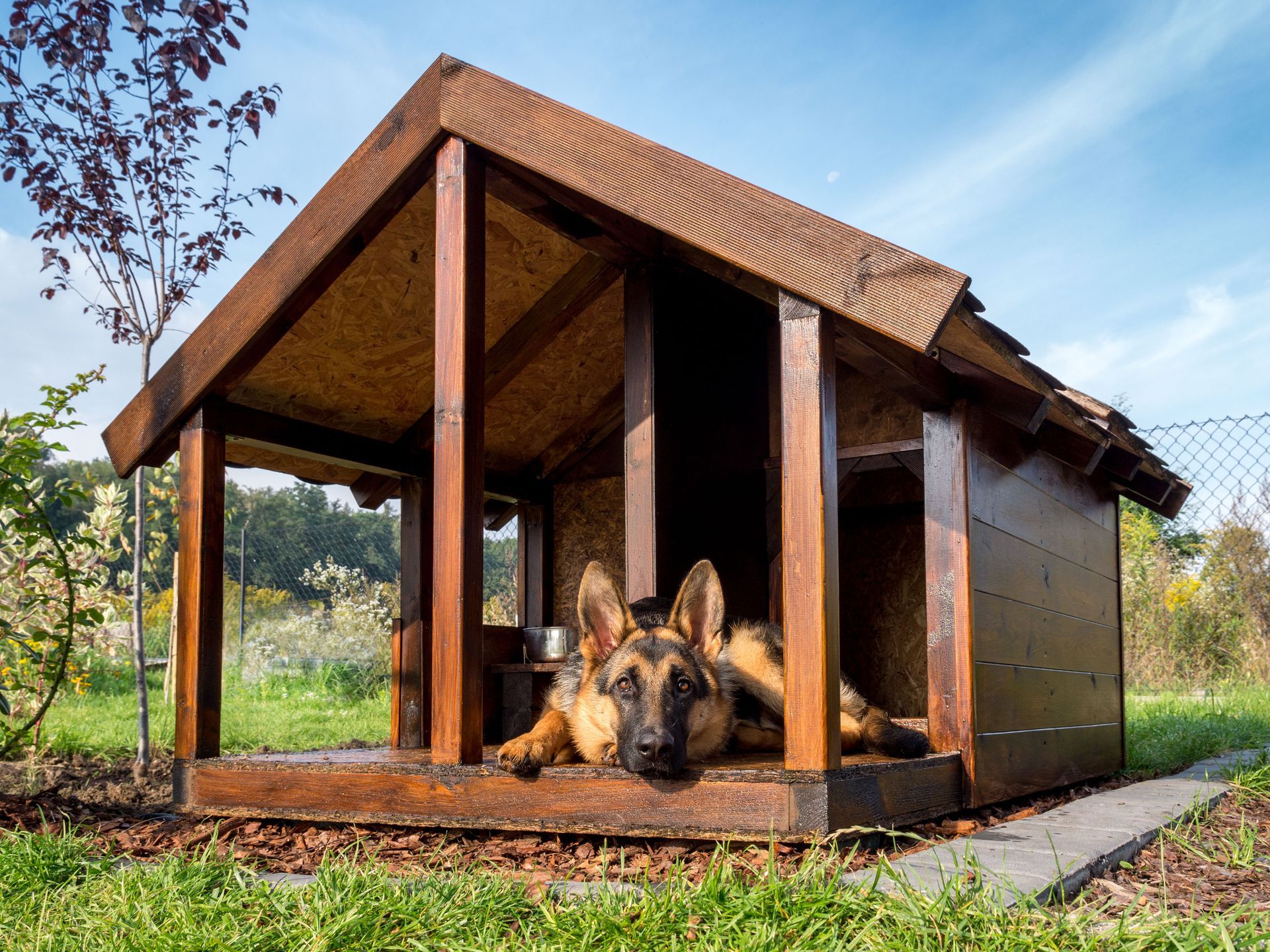Why Training Your Dog Boundary Control Is Essential
Understanding why boundary control is essential for dogs is a cornerstone of responsible pet ownership. Dogs are naturally curious and energetic creatures who thrive on exploration. However, without clear guidance, that curiosity can lead them into dangerous situations such as running into traffic, wandering into a neighbor's yard, or encountering unsafe objects and animals. Training your dog in boundary control equips them with the skills to recognize and respect limits, promoting safety and peace of mind for both you and your pet.
According to Companion Animal Psychology, 78% of dog owners have a fenced backyard that allows their pets to roam freely, underscoring how many families value the safety of boundaries. Yet, a physical fence alone isn't always enough. Dogs need structured training to understand invisible boundaries, both indoors and outdoors.
You'll also see how structured training opportunities like a puppy class help set the foundation for boundary control. Ultimately, boundary training isn't about restriction. It's about freedom within safe, predictable limits that foster a healthier bond between you and your dog.
Understanding the Concept of Boundary Training
Boundary training teaches dogs where they're allowed to go and what areas they should avoid. These invisible lines can be as simple as staying out of the kitchen while meals are prepared or as critical as never running past the driveway. Unlike obedience commands, which are moment-to-moment directions, boundaries teach dogs lasting spatial awareness.
Enrolling in a puppy class is often the first step in introducing this concept. Trainers use controlled settings and repetitive practice to show puppies that respecting space leads to rewards. Over time, boundaries become second nature, providing dogs with confidence and owners with peace of mind.
Recognizing the Psychological Benefits
Dogs thrive on structure. When they know their environment's rules, they feel secure and less anxious. Without boundaries, dogs may act out due to confusion, chewing furniture, jumping on guests, or dashing through open doors.
Boundary training eliminates this uncertainty. When reinforced through a puppy class, it helps your dog understand expectations in a safe, consistent environment. A confident dog who respects limits is calmer, more adaptable, and more pleasant to live with.
Appreciating the Role of Consistency
Consistency is critical when teaching boundaries. Dogs can't distinguish "sometimes” rules from "always” rules. If they're allowed on the couch one day but scolded the next, they'll struggle to learn. Everyone in the household must enforce the same boundaries with the same methods.
A structured puppy class can help families learn how to apply boundaries uniformly. Trainers often teach owners how to reinforce the same rules at home, ensuring consistency across different environments. This prevents mixed signals and accelerates the learning process.
Differentiating Between Commands and Boundaries
Commands like "sit,” "stay,” or "come” are short-term instructions. Boundaries, however, are long-term guidelines that govern where a dog can go. For instance, a dog may learn to "stay” temporarily, but boundary training helps them understand they should never go past the property line without permission.
Incorporating both elements ensures that your dog is responsive in the moment and consistently aware of safe zones. When combined with early instruction from a puppy class, dogs develop both obedience and boundary awareness, making them more reliable companions.
Preventing the Development of Problem Behaviors
Without boundary control, dogs often develop habits that are difficult to break, such as bolting out doors, digging under fences, or barking excessively at passersby. These behaviors may become self-rewarding, since escaping feels exciting or barking relieves stress.
By teaching boundaries early, you prevent these habits before they start. For example, a puppy class can address door-dashing behaviors, showing young dogs that waiting calmly at the door leads to attention and praise. Preventing bad habits is always easier than correcting them later.
Ensuring Safety Through Effective Boundaries
One of the greatest advantages of boundary training is safety. Dogs who respect their limits are far less likely to dart into traffic, get lost, or ingest dangerous substances. A boundary-trained dog is also less likely to annoy neighbors or get into conflicts with other pets.
Pairing a fenced yard with boundary training doubles your protection. A physical barrier provides structure, while training ensures your dog respects it. Whether you live in a busy neighborhood or a quiet rural area, boundary control minimizes risks and gives you peace of mind.
Reducing Stress for Dogs and Owners
Boundaries reduce stress for everyone in the household. Dogs know where they're allowed, owners don't have to constantly chase or correct them, and the environment becomes calmer. Without constant anxiety about what your dog might do next, you can enjoy more relaxed interactions.
Structured lessons from a puppy class reinforce these stress-reducing boundaries early on. Puppies learn not to enter restricted rooms, jump on visitors, or wander too far outside—habits that make your daily routine smoother and more enjoyable.
Building a Stronger Bond
Training is about more than rules. It's about building trust and communication between you and your dog. When your pet learns to respect boundaries, they also learn to trust your guidance.
Each successful training session, especially in a puppy class, strengthens this bond. Working together on boundaries fosters teamwork and mutual respect, deepening your relationship. Over time, boundary training becomes less about restriction and more about a shared understanding.
Overcoming Challenges in Boundary Training
Challenges are inevitable when teaching boundaries. Some dogs resist restrictions, especially if they're used to roaming freely. Others become distracted easily, struggle with territorial instincts, or display anxiety that makes training more difficult.
The solution lies in breaking lessons into small, manageable steps and reinforcing each success. Patience and consistency are essential, as setbacks are part of the process. Professional trainers can help guide both owner and dog through difficult moments, and a puppy class provides the controlled environment needed to build confidence and consistency.
Supporting Long-Term Success
Boundary training isn't a one-time event; it requires long-term consistency and reinforcement. Owners can seek additional resources such as professional trainers, educational books, and structured classes that provide ongoing opportunities for reinforcement. Community groups also allow owners to share experiences, gain support, and encourage progress.
A puppy class can be a particularly valuable resource, since it lays the groundwork for responsible habits while also providing socialization opportunities that strengthen boundary awareness. Over time, regular practice and access to the right resources ensure that training becomes second nature for both dog and owner.
Boundary training is far more than a convenience. It's an essential practice for ensuring your dog's safety, reducing stress, and building a stronger human-dog bond. From preventing dangerous escapes to fostering psychological well-being, boundary control sets the stage for a harmonious life with your pet.
Early training, especially through a puppy class, provides the foundation for lifelong success. As your dog matures, boundaries remain a guiding framework that shapes positive behavior, strengthens trust, and promotes a safe, happy environment for all. With consistent reinforcement, these boundaries encourage confidence, reduce unwanted behaviors, and foster a deeper bond between you and your pet, ensuring harmony within your home and community.
At A Crate Escape, we believe every dog deserves the freedom that comes with safe, structured boundaries. Start your journey toward a safer, happier life with your pet today. Contact us to enroll in training programs that make boundary control second nature.











Share On: